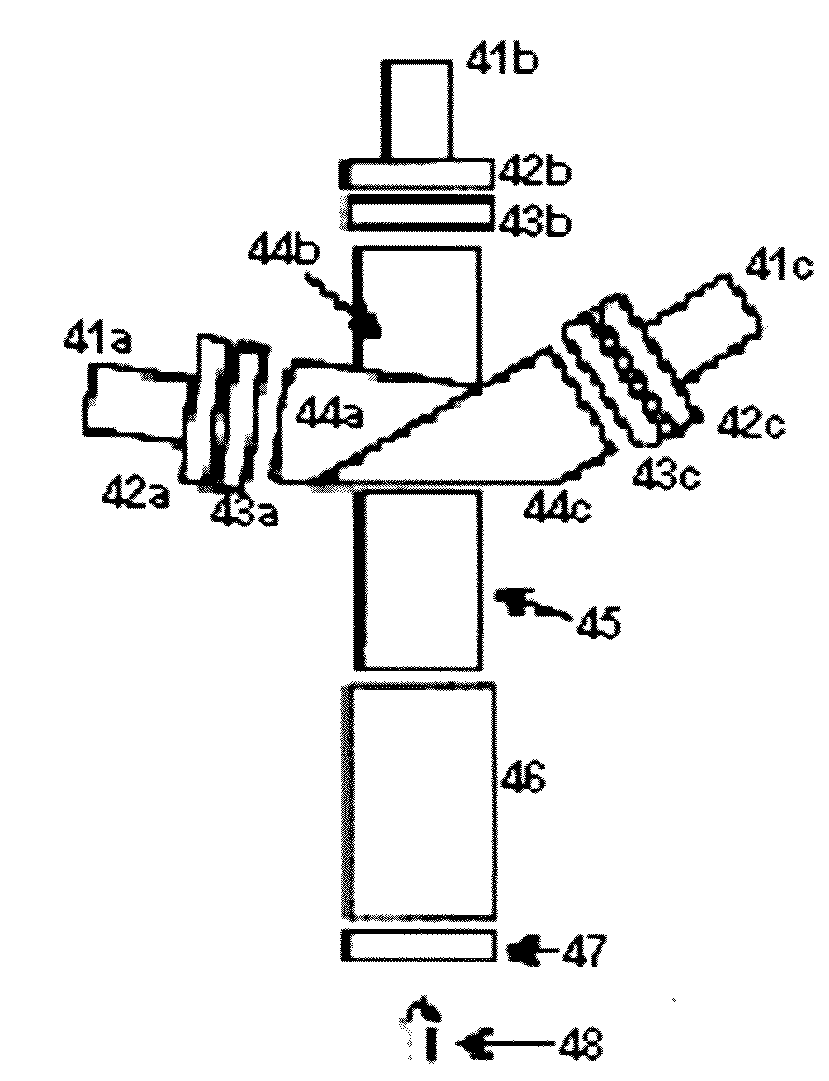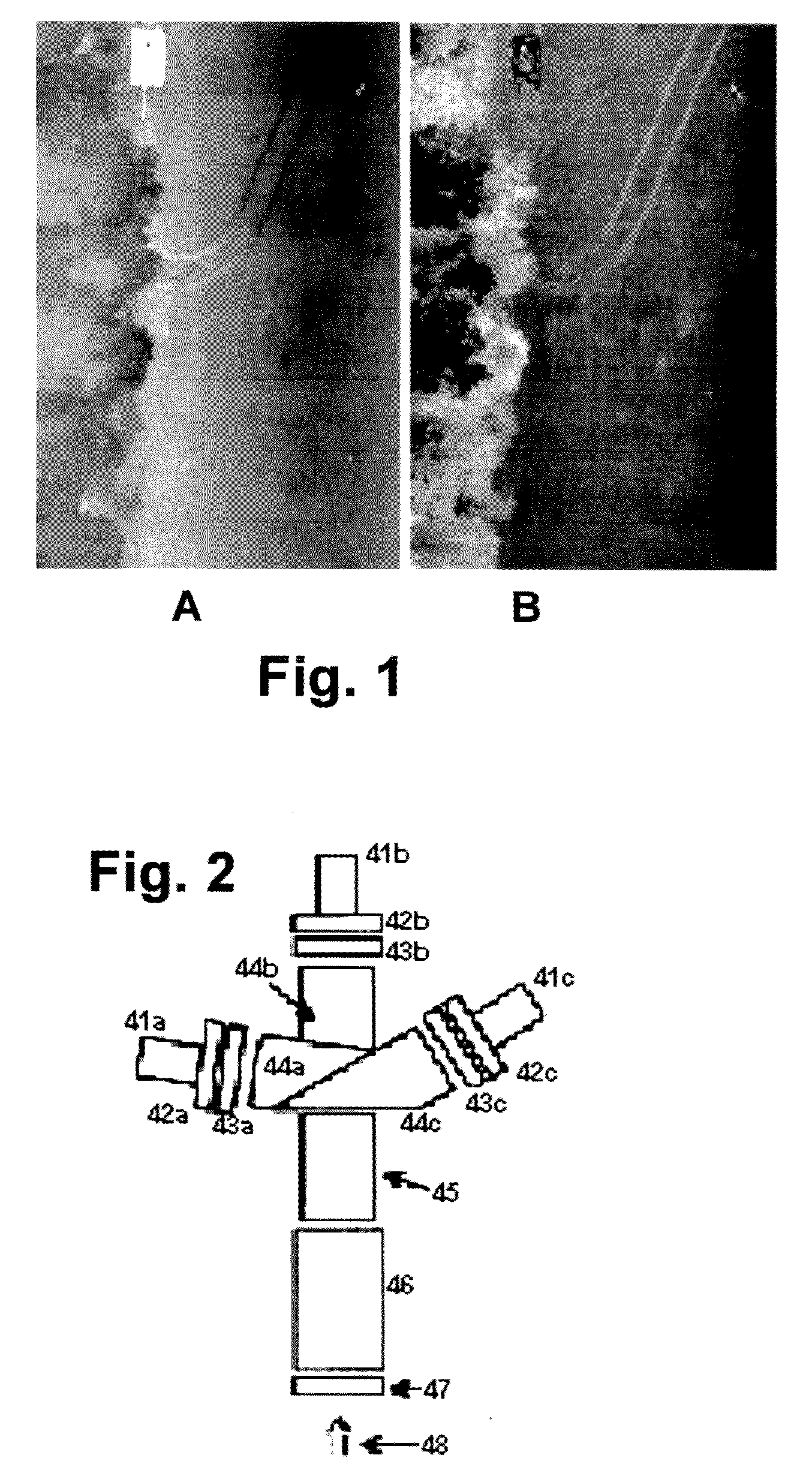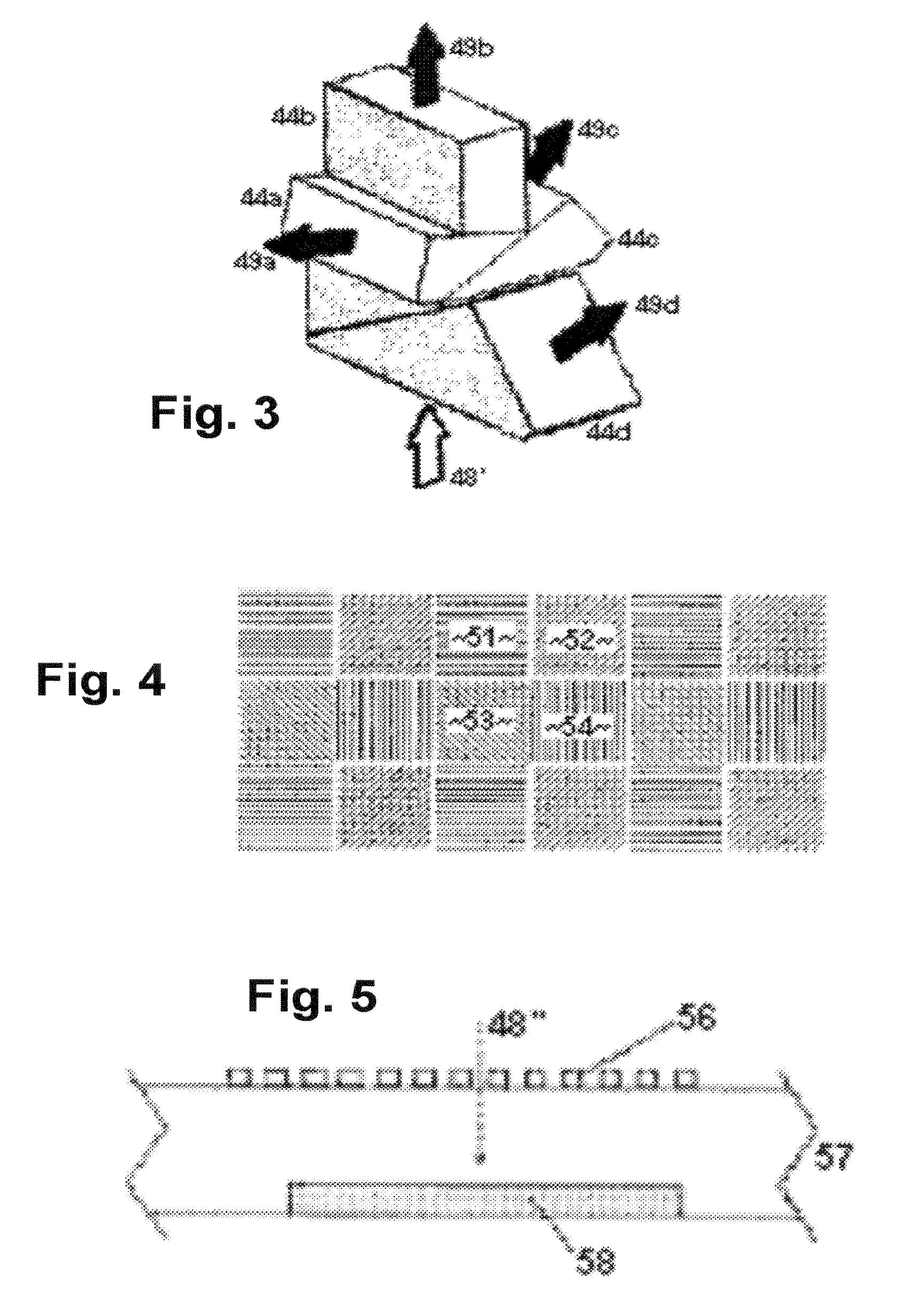Simple estimates, however, indicate that use of either spectral or polarization technique alone suffers a very distinctly limited discrimination capability.
Part, but only part, of the reason for this limitation resides in the unfortunately large sizes and weights of currently known independent spectral and polarization packages.
Similarly limited are existing UAV-based passive mine-detection systems such as those known by the acronyms COBRA and ASTAMIDS.
As a consequence these devices, paired, are not generally to be found in medical diagnostics—even though they have been demonstrated as an effective diagnostic tool for
early detection of
skin cancer (
melanoma).
Much more severe, however, than the above-discussed
system volume, weight and cost burdens are key technical limitations that actually obstruct both
high resolution and high
signal-to-
noise in overall discrimination of objects of interest against complicated backgrounds.
Multispectral and multipolarization data provide complementary measurements of visual attributes of a scene, but when acquired separately these data are not inherently correlated—either in space or in time.
To the contrary they are subject to severe mismatches.
Simple estimates for key environments (particularly ocean-submerged objects) suggest that the penalty paid in attempts to integrate such disparate data sets, after initial acquisition by physically separate systems, probably amounts to a discrimination loss of 25 to 35 dB or more.
As a matter of
actual practice, however, the ideally required subpixel registration is both computationally expensive and difficult.
Even though this problem arises most proximately from such imperfect time samplers, there is a more fundamental cause.
Residual errors of registration thus persist, and yield the above-noted very significant degradations in expected
processing gain.
Efforts to overcome these compromised fundamental performance parameters in turn lead to increased
system complexity—with attendant size, weight, power, and reliability problems.
Neither of these devices has ever before been associated with multispectral imaging as such—or with the above-detailed problems of separate spectral and
polarization imaging.
While certainly feasible, the polarization-array architecture under discussion appears to be relatively complex, expensive, and heavy.
In addition, pixel registration (discussed above) for multichip systems has proven to be very difficult.
Only 0.5-pixel registration has been demonstrated to-date, and this would represent significant compromise of postprocessing
gain.
In such cases, photons which fall upon a nonsensing portion (e. g. corner) of the pixel are not detected, resulting in an area-proportional loss of radiometric sensitivity.
That is, source illuminations whose polarizations are crossed or aligned relative to inherently polarizing axes of object surfaces, can produce optical
extinction or full transmission, respectively.
If the axes of the illumination and the object surfaces do not happen to be optimally crossed or aligned, however, such visually striking clues may not appear.
Viewing each of these images alone, or even inspecting them side by side, may not suffice to pick out e. g. machinery concealed under foliage.
In fact when this kind of display is used, one remaining awkwardness is simply lack of positional reference.
If the reference is made light enough to avoid obscuring the difference signatures, then unfortunately it can be difficult to clearly see locations in the reference
overlay.
Moreover, there is a more basic limitation.
This relationship is somewhat controllable, but at the cost of additional time to determine the ideal (maximum contrast) orientations for the scene.
In general, ideal orientations for different objects in the same scene are at least slightly different, so that no single best solution exists for the entire scene.
Finally, the
false color required for clear discrimination of positional
overlay from difference signatures militates against use of this difference technique in multispectral imaging.
Several of the innovative techniques described appear to be unsuited to the problem discussed above (FIG. 14), because the signature cueing
mechanics require relatively broad display-screen areas.
Unfortunately, a particular object or surface 101 of interest may be quite small.
The color in these particular examples is not natural scene color, and would interfere with viewing of natural-color scenes—at least to the extent that such coloring is applied to unpolarized (or so-called “polarization sum”) image areas.
Therefore this specific technique is not appropriate for use with full natural multispectral, multipolarization data; however, certain of Yemelyanov's other cue techniques may serve well.
Conclusion—Thus in medical, commercial, ecological and military imaging alike, separate paths of development for multispectral and multipolarization technologies have actually obstructed optimization of overall object-discrimination capabilities.
Furthermore some superlative optical innovations have never been brought to bear on the highest forms of the problem of detecting and identifying objects in complex environments.
Accordingly the prior art has continued to impede achievement of uniformly excellent object discrimination.
 Login to View More
Login to View More  Login to View More
Login to View More 


